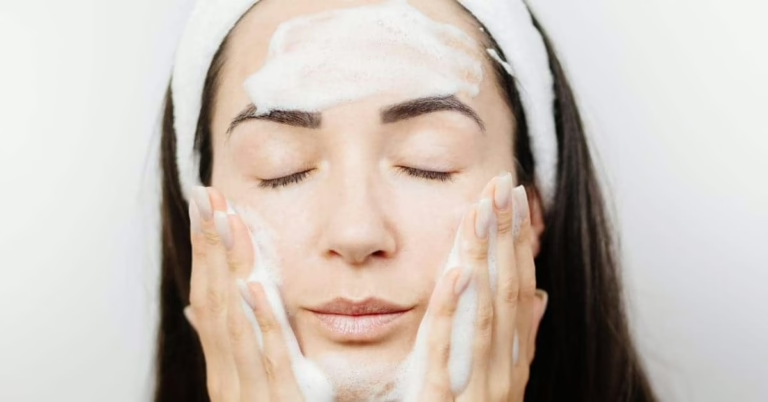Essential Oil Safety & Dilution Best Practices
Imagine discovering the magical world of essential oils, where nature’s fragrances can uplift your mood, soothe your skin, and even enhance your well-being. You may have seen countless online posts promising miraculous benefits, but there’s one critical detail that often gets overlooked: safety. Without proper dilution, these potent extracts can do more harm than good. In this article, you’ll learn how to harness the true power of essential oils safely. We’ll share actionable tips, expert-backed guidelines, and relatable examples to ensure you never compromise on your health. Whether you’re new to essential oils or looking to refine your routine, this guide is your trusted companion on a journey to safe and effective natural wellness.
As you explore this article, you’ll understand why dilution is not just a recommendation—it’s a necessity. Our aim is to equip you with simple, step-by-step advice so that you can enjoy the myriad benefits of essential oils without risking your skin or overall health. Let’s dive into the secrets of essential oil safety and unlock the hidden power of nature’s remedies.

The Hidden Dangers of Improper Essential Oil Use
Essential oils are celebrated for their therapeutic qualities, yet using them without proper dilution can lead to a range of unwanted side effects. Many enthusiasts jump straight into applying these oils to their skin, only to find themselves dealing with irritation, burns, or allergic reactions. The potency of essential oils means that even a few drops, when used undiluted, can cause significant harm.
Consider a scenario where you mix a few drops of peppermint oil directly into your skincare routine. Instead of a refreshing sensation, you might experience a burning feeling, redness, or even an unexpected rash. In some cases, repeated exposure without proper dilution can sensitize your skin, making you more prone to reactions in the future. These issues are not isolated; many users have encountered them simply by not following safe usage guidelines.
Moreover, improper use isn’t limited to skin applications. Inhaling undiluted oils or using them in diffusers without proper guidelines can also lead to respiratory discomfort and other complications. Understanding these risks is crucial—once you’re aware, you’re more likely to embrace the safety practices we’ll outline. Remember, the goal is to enjoy the benefits of essential oils without paying the price in discomfort or harm.

What Are Essential Oils? A Quick Overview
Essential oils are concentrated extracts derived from various parts of plants—leaves, flowers, bark, or roots—that capture the plant’s natural aroma and beneficial properties. They have been used for centuries in traditional medicine, aromatherapy, and natural skincare routines. These oils are not only prized for their fragrance but also for their ability to promote physical and emotional well-being.
When you think of essential oils, you might picture lavender for relaxation, tea tree for its antimicrobial properties, or eucalyptus to clear your sinuses. Each oil comes with its own set of benefits, and many users find that integrating these oils into their daily routine can lead to improved mood, clearer skin, and overall enhanced vitality. However, it’s essential to understand that their strength is a double-edged sword. Because they are so concentrated, even a small mistake in usage can lead to adverse reactions.
The popularity of essential oils has grown tremendously, especially among those seeking natural and holistic remedies. This trend is particularly noticeable in India, where busy professionals and young adults are increasingly turning to nature for safe and effective health solutions. As you navigate the world of essential oils, keep in mind that knowledge is your best ally. With the right information and proper practices, you can unlock the full potential of these natural extracts without risking your health.

Essential Oil Safety Fundamentals
To make the most of essential oils, you need to embrace a few fundamental safety practices. First and foremost is the concept of dilution. Essential oils are highly concentrated, meaning that using them in their pure form can cause skin irritation or sensitization. Diluting them with a carrier oil such as coconut, almond, or jojoba oil not only helps in evenly spreading the oil but also minimizes the risk of adverse reactions.
Another important safety tip is to perform a patch test before using a new oil. Apply a small amount of the diluted oil on your inner forearm and wait 24 hours to see if any irritation occurs. This simple step can save you from potential allergic reactions or skin damage later on. Additionally, be aware of the recommended dilution ratios. For instance, a common guideline is to use 1-2 drops of essential oil per teaspoon of carrier oil for topical applications. However, this may vary depending on the type of oil and the sensitivity of your skin.
Always store your essential oils in a cool, dark place to maintain their potency and extend their shelf life. Avoid direct sunlight and extreme temperatures, which can degrade the oils over time. Finally, educate yourself about each oil’s properties. Some essential oils, like citrus, can make your skin more sensitive to sunlight, necessitating extra precautions. By following these fundamentals, you ensure that your journey with essential oils remains both enjoyable and safe.

Step-by-Step Guide to Proper Dilution
When it comes to using essential oils safely, following a clear, step-by-step dilution guide can make all the difference. This guide is designed to help you create your own blends, whether for skincare, massage, or aromatherapy. Here’s how you can do it:
1. Choose Your Carrier Oil
Start with a high-quality carrier oil that suits your skin type. For dry or sensitive skin, consider using jojoba or almond oil; for acne-prone skin, grapeseed oil might be a better choice. The carrier oil acts as a base that not only dilutes the essential oil but also nourishes your skin.
2. Determine the Dilution Ratio
A standard dilution ratio for topical application is 1-2% essential oil in a carrier oil. For most adults, this translates to roughly 1-2 drops of essential oil per teaspoon (5 ml) of carrier oil. For more sensitive areas like the face, a 1% dilution is recommended, while body applications may allow a slightly higher concentration.
3. Mixing Process
In a clean container, measure the carrier oil and add the appropriate number of essential oil drops. Stir gently to ensure an even mixture. If you’re preparing a larger batch, use a glass bottle with a tight seal to shake the blend thoroughly.
4. Perform a Patch Test
Before using the diluted mixture on a larger area, apply a small amount to your inner forearm. Wait 24 hours to check for any signs of irritation or allergy. If no reaction occurs, you can confidently proceed with your application.
5. Usage and Storage
Apply the blend to the desired area, massaging it in gently. Store any remaining mixture in a cool, dark place to preserve its potency. Label your container with the dilution ratio and date of preparation for future reference.
By following these steps, you not only maximize the therapeutic benefits of your essential oils but also safeguard your skin and overall health. This methodical approach ensures that you use essential oils responsibly, making your natural wellness journey both safe and effective.

Expert Tips & Common Mistakes to Avoid
Even with the best guidelines, mistakes can happen. Here are some expert tips and common pitfalls to watch out for:
Stick to Recommended Ratios
It might be tempting to add more essential oil for a stronger effect, but more isn’t always better. Exceeding the recommended dilution can lead to skin irritation or adverse reactions.
Avoid Mixing Incompatible Oils
Some essential oils do not blend well together due to their chemical compositions. Research or consult with a professional before combining oils to ensure compatibility.
Do Not Skip the Patch Test
A patch test is a simple yet crucial step in preventing allergic reactions. Never assume that because an oil is natural, it’s automatically safe for every skin type.
Mind the Expiry Dates
Essential oils have a shelf life, and using expired oils can compromise their efficacy and safety. Keep track of purchase dates and use the oils within their recommended period.
Consider Your Environment
Some oils, particularly citrus-based ones, can increase your skin’s sensitivity to sunlight. Always consider your exposure to the sun and take extra precautions when using these oils on exposed skin.
Consult Reliable Sources
With the abundance of information online, it’s essential to rely on reputable sources and expert advice when it comes to essential oil usage. Avoid trends that promise instant results without scientific backing.
By avoiding these common mistakes and following expert recommendations, you can ensure a safe, effective, and enjoyable experience with your essential oils. Remember, the goal is to integrate natural wellness into your routine in a way that enhances your life without any unnecessary risks.
Frequently Asked Questions (FAQs)
Q1: What is the ideal dilution ratio for essential oils?
A: For most topical applications, a 1-2% dilution is recommended—about 1-2 drops of essential oil per teaspoon of carrier oil. For sensitive areas like the face, stick to 1%.
Q2: Can I mix different essential oils together?
A: Yes, but caution is key. Ensure that the oils are compatible by researching their properties or consulting an expert.
Q3: How do I store my essential oils and blends?
A: Store them in a cool, dark place away from direct sunlight. This helps maintain their potency and extends their shelf life.
Q4: What should I do if I experience irritation after application?
A: Immediately wash the area with a gentle cleanser and discontinue use. If irritation persists, seek advice from a healthcare professional.
These FAQs address the most common concerns and provide you with quick, actionable answers to ensure that your essential oil journey is as safe and effective as possible.
Wrapping UP
In summary, essential oils offer a wealth of benefits when used correctly. By understanding the importance of proper dilution, following expert guidelines, and avoiding common mistakes, you can enjoy the natural, holistic benefits of these potent extracts without compromising your health. Remember, your safety is paramount, and small steps taken now can lead to significant, positive changes in your wellness journey.
We invite you to try these dilution techniques in your daily routine. Share your experiences, ask questions in the comments, and subscribe to our newsletter for more expert tips on natural wellness. Embrace the safe side of essential oils and unlock their full potential today!







